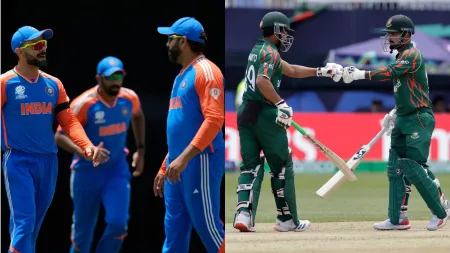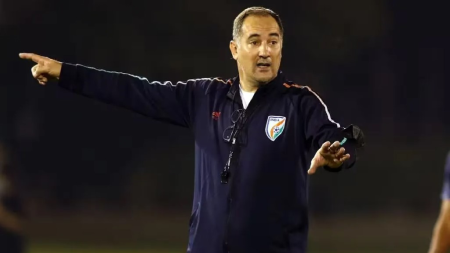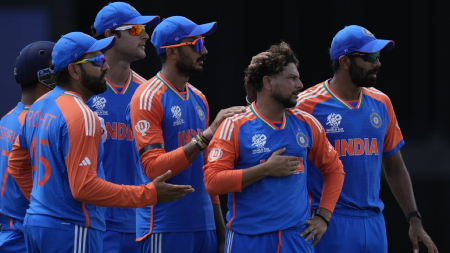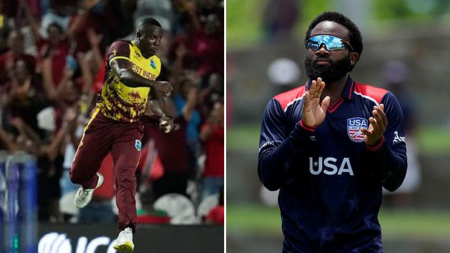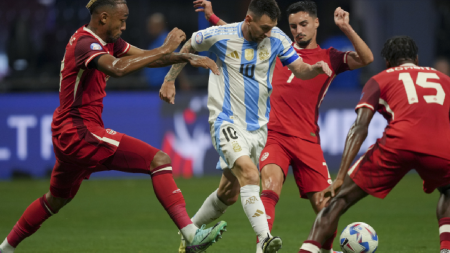Euro 2024: Tiki-taka is put on backburner as Spain turns to speedy wingers
Death by a thousand passes was a metaphor; death by 42 passes was real.
Spain’s first goal against Scotland in a European Championship qualifier game in 2011 featured a sequence of 42 patient passes in 94 seconds. The build-up began with Sergio Busquets rolling the ball to Xavi Hernandez at the centre of the park and ended with David Silva slotting home a cutback from Jordi Alba. Every Spanish player, including goalkeeper Victor Valdes touched the ball in the intricate passing marathon that embodied the soul of tiki taka.

Death by pace is the new metaphor, reality and identity of Spain. The two-time European champions’ first goal of Euro 2024, against Croatia took only three passes and six touches in six seconds. The left-back Marc Cucurella gathered a loose ball halfway in his own half, took a couple of touches, slashed the ball to Rodri, who diverted it to the path of Fabian Ruiz, buzzing near the central circle. He took a glance upfield, spotted the run of Alvaro Morata through the central channel, and sliced a low through ball into the sizable space between the two centre-backs. The Spanish marksman cut away from the lax defenders sniffing him and screamed his shot past the goalkeeper Dominik Livaković.
The two goals might be the outer limits of two distinct philosophies. But they fittingly capture the shifting sands in Spanish football. Not that they have u-turned from the ideals of the most radical football vision of this century — passing and possession is still the essence of their game — but they have espoused more directness to their game. That they had less possession than their opponents for the first time in 136 games might be an aberration, for they still topped the possession charts, completing most passes (667) in the Euro qualifiers. A more instructive statistic is that they had the fourth-most crosses per game (26.3) of the 53 nations competing in the qualifying group. Crossing, in the tiki taka heyday, had a heretical value. No longer though.
Not just manager Luis de la Fuente, but his predecessors such as Luis Enrique had sought more directness and verticality. “The philosophy has always been similar but each coach has their own touches. (De la Fuente) wants to be a bit more direct, always using possession to damage the opponent. You have to change the chip (our approach),” Rodri once observed.
De la Fuente is a pragmatist, and not an ideologue. Unlike club managers, their country counterparts are forced to produce the best results from a given set of players in a limited time-frame. So he went for the most viable options. “If we have players with the pace of Lamine Yamal, Nico Williams, Ferran Torres or Ayoze Perez, it makes no sense not to use those options,” de la Fuente reasoned.
So just as Luis Aragonés judged the best way forward was to pin his game on the two generational midfielders in the country and weave an environment where they could fully express their creativity and imagination, de la Fuente decided to build his team around two of the fastest players at his disposal, Yamal and Williams. As recently as the Qatar World Cup, Spain’s prerogative was to squeeze in as many playmakers as possible. The axis of the team was Pedri and Gavi, both of Barcelona. Both are important still, the latter missed the tournament due an injury, but the wind beneath Spain’s wings are the two wingers.
Everything would gravitate towards them, both with explosive speed and an exotic array of skills. Both could go inside or outwards, both could cross, dribble and score goals. The game against Italy was a classic example, where the wingmen, especially Williams, ran rings around Italy’s full back. So speedy and guileful that Italy summoned Andrea Cambiaso to support the stupefied Giovanni Di Lorenzo, but to little effect as the ploy afforded more offensive liberty for the overlapping Cucurella. The goal against Italy too originated from Williams’ snap-second burst down the left. Williams, the son of Ghanaian immigrants, their journey to Spain involving crossing parts of the Sahara on barefoot, was Italy’s chief tormentor.
Only 85 seconds had passed when he tore down the left, reached the byline and looped a delicious ball inside to Pedri, who shot feebly to Donnarumma. On the opposite flank, Yamal snaked inside to create multiple chances but for Morata to fluff. He then cut inside and trimmed the far post with a curling beauty. The pair top the dribbling charts (Yamal 7, Williams 6) too. Tiki-takians barely dribbled.
The midfield, helmed by the immaculate Rodri, is still their foundation, the heat zones would tell that they spent most of the time pinging the ball at the centre of the pitch. But whereas they would progress like compact triangles, each within hugging distance of the other, through the central channels, they are more spread out now. When the ball is played to the flanks, they spread out even further to make the pitch look large and to create space for the wingers. The team too is tuned-up to foster the best atmosphere for the pair. Morata is a modern centre forward rather than a false nine. All three midfielders are excellent ball-carriers and passers.
The Euro, thus, has seen a volte-face in Spanish football norms. Not really, the coach explained: “We are making a team with many ways of playing. Our rivals know we can hurt them with possession, with positional attacks built with many passes or also — if they give us the chance — we will run very fast.” The defenders of Croatia and Italy would readily vouch for “running very fast”. Death by pace has replaced death by pass. But a death still for the defenders.
Disclaimer: The copyright of this article belongs to the original author. Reposting this article is solely for the purpose of information dissemination and does not constitute any investment advice. If there is any infringement, please contact us immediately. We will make corrections or deletions as necessary. Thank you.
